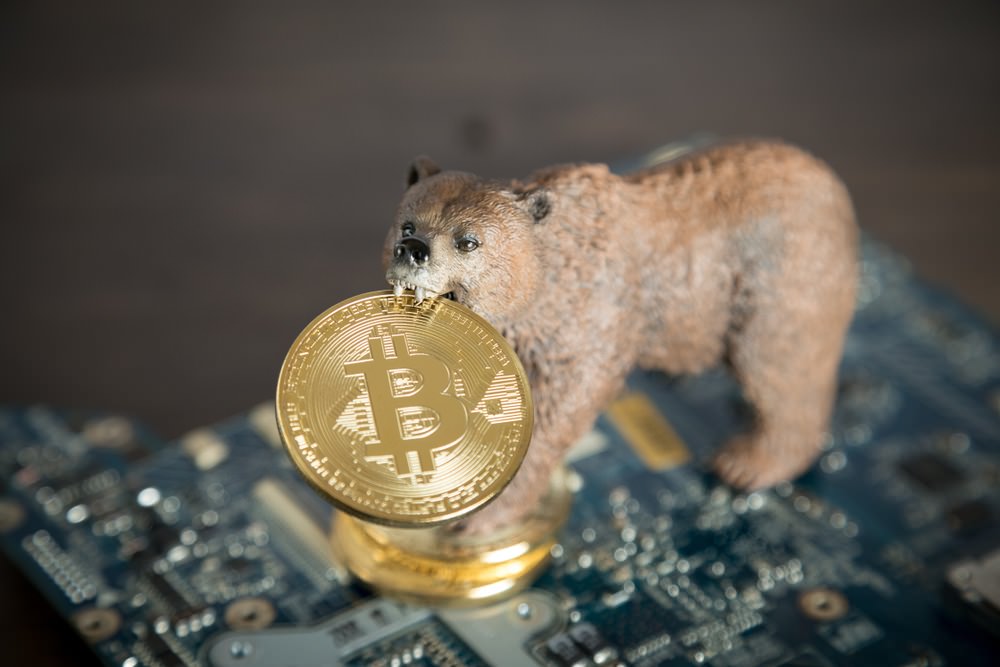
Since’s the commencement of crypto’s bear market in 2018, investors in this budding asset class have sought to find refuge, banking their cryptocurrency holdings on a number of prospective catalysts, including the advent of institutional players and the formulation of a Bitcoin-backed exchange-traded fund (ETF).
So, many thought their prayers were answered, when Amun, a European fintech firm, introduced a Switzerland-based exchange-traded product (ETP) centered around Bitcoin, Ethereum, XRP, Litecoin, and Bitcoin Cash (recently omitted due to a contentious hard fork).
Related Reading: Crypto Week in Review: Bitcoin ETP Launches in Switzerland, KuCoin Scores $20M
As this news hit the crypto mainstream, with thousands quickly sharing the development on this ecosystem’s social media channels, a copious amount of bullish sentiment found footing. Some optimists, blinded by “hopium,” claimed that this turn of events alone would turn the tide in bulls’ favor.
But sadly, the launch of this instrument hasn’t done much to hamper the propagation of sell-side price action. In fact, as the product came to life, the crypto market continued to collapse, with BTC freefalling to establish new year-to-date lows under $4,500, as altcoins instantaneously followed suit. Many chalked this up to the lack of interest in Amun’s crypto foray, coupled with the misunderstood fact that the product isn’t the ETF that investors have been clamoring for.
Amun’s Switzerland-based “HODL5” ETP Fails to Move Crypto Markets
As astutely pointed out by Su Zhu, a Singapore-based cryptocurrency industry executive and investor, the product, dubbed “HODL5” in a nod to a long-standing inside joke in the cryptocurrency cohort, saw minimal volume on its first day in operation.
Citing data gathered by SIX Swiss Exchange, the platform that HODL5 was debuted on, Zhu exclaimed that the product only saw 27,244 of its shares traded, a mere ~$400,000 in volume, a far cry from the millions in volume that optimists were betting on.
Day1 of the Swiss HODL5 ETF saw 27,244shares ($400k) of volume. @FlowTraders is the official marketmaker. I’ll be watching this closely as a barometer of natural interest.https://t.co/NFrKY1cLWr
— Su Zhu (@zhusu) November 24, 2018
Many chalked up this lack of volume to a number of factors, namely the fact that SIX is only the world’s 13th largest stock exchange, even though the firms, funds, and vehicles listed on the platform amount to $1.6 trillion.
Others looking to find a silver lining aimed their scopes at other nuances, with some pointing out that the scarcity of trading volume pertaining to HODL5 indicates that institutional investors with access to SIX, the vehicle’s targeted clientele, don’t believe that the crypto market is poised to reverse its multi-month downtrend.
ETP, Not ETF
Although some media lauded and touted Amun’s crypto basket as the “world’s first Bitcoin ETF,” a hot-button topic for the majority of crypto investors, it is important to accentuate that this is a piece of disinformation.
HODL5, is, in fact, an ETP.
While the two forms of investment vehicle do share underlying similarities, when it comes down to the nitty-gritty, an ETP isn’t inherently an ETF.
Peter Sin Guili, who did some internet sleuthing to gain insight on the matter, divulged that HODL5 is nothing more than an exchange-traded note (ETN) or commodity (ETC), alluding to the fact that some investors were in over their heads when the instrument was announced.
IMPORTANT:: Please take note the Swiss #Crypto Exchange-Traded Product (Amun Crypto Basket Index) that is launching on 21 Nov, is NOT an #ETF. It is listed under ETP – a debt security NOT a Fund & is not supervised by FINMA.
See attached pics from Six Swiss Exchange!#Bitcoin pic.twitter.com/ggmoqmTLj4— Peter Sin Guili (@petersinguili) November 20, 2018
For those who aren’t in the know, the differentiation between an ETF and an ETC/ETN is actually more pertinent than it may seem.
More specifically, as per an official SIX release, Amun’s crypto basket product, while collateralized, isn’t surprised by Switzerland leading financial regulator, with this classification likely putting off investors at large. Additionally, HODL5’s ETP status also means that Amun isn’t eligible to have a central counterparty/clearinghouse (CCP) manage or aid its vehicle, likely diminishing interest in the product even further.
Although the aforementioned points may scream “bear,” many hold faith in the product, which may prove to be an intermediate stepping stone toward a Bitcoin-secured, U.S.-based ETF that will catalyze the influx of retail investors.
Featured image from Shutterstock.
